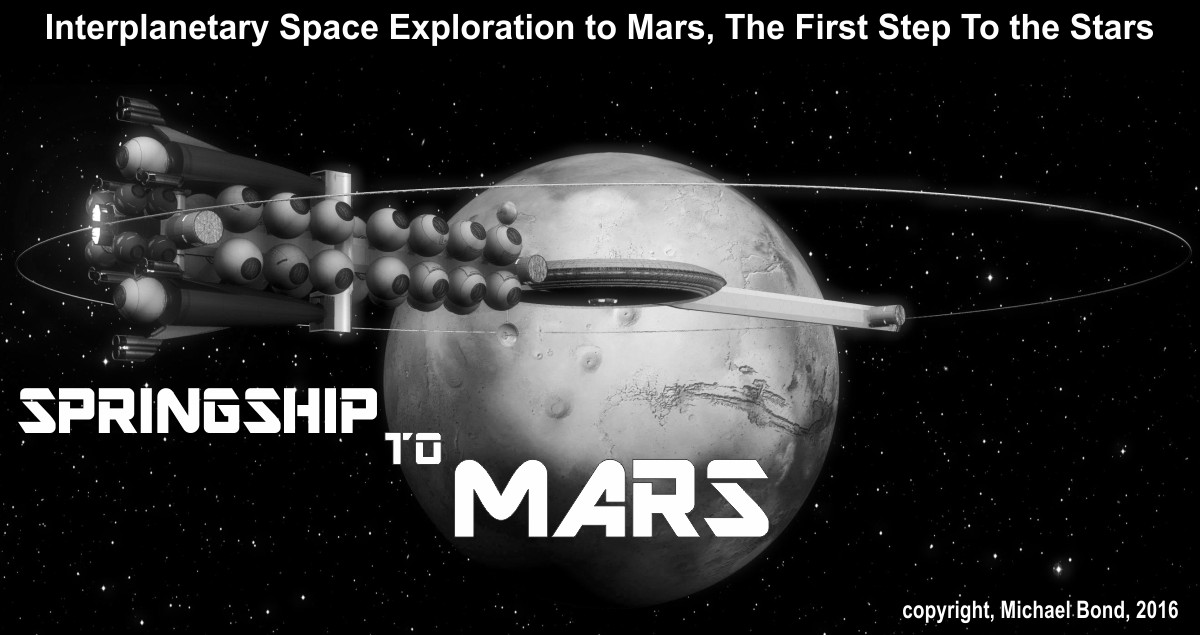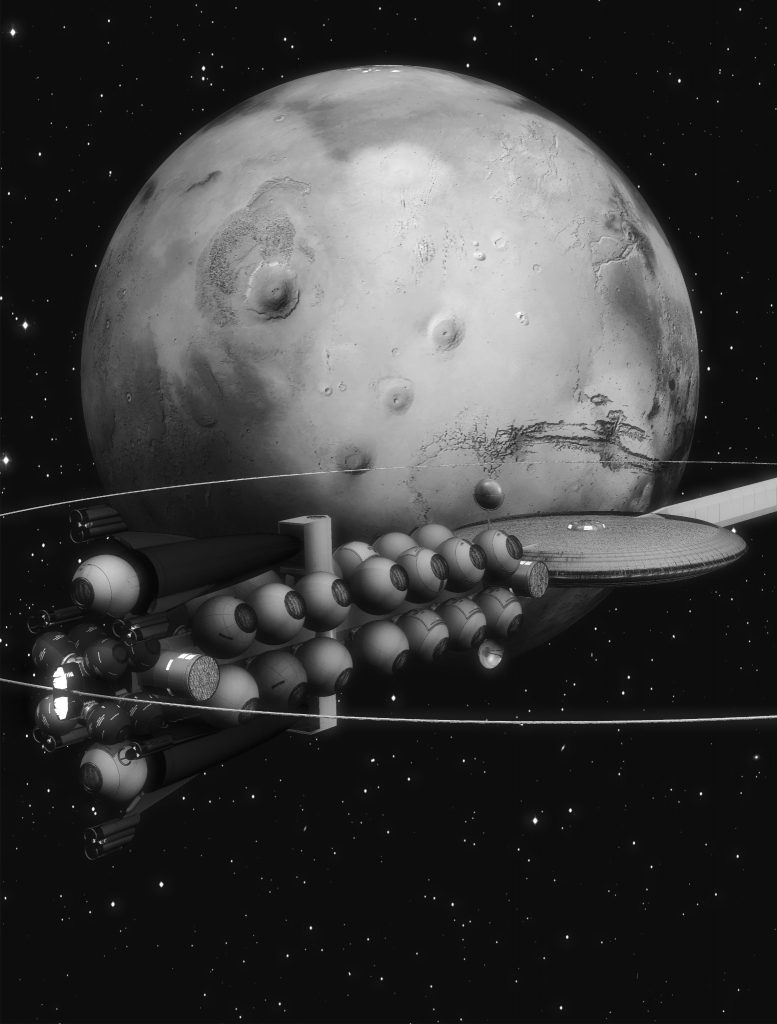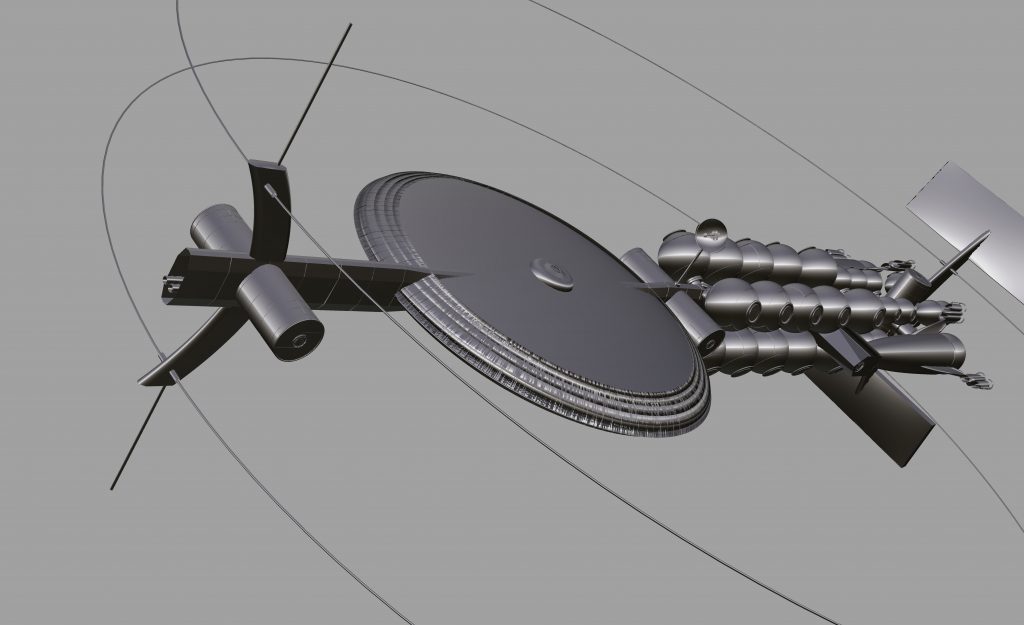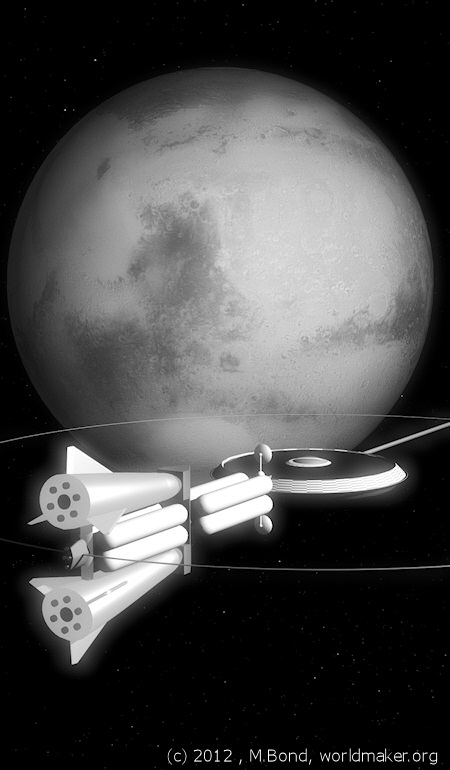
Springship
SpringShip – Interplanetary Spaceship Design
Practical design for a deep space, high speed interplanetary spaceship,
and precursor for future interstellar ship design.
(Begun 2001 AD)
Introduction
A practical solution to the problems of long term, long distant voyages in space. To address the hazards of long trips in freefall by providing artificial gravity. To solve the problems faced by exposure to micrometeorites and suchlike projectiles, and the issues of radiation exposure from the sun.
This is the SpringShip.
Watch the latest animation – SpringShip ver.3
7th, May, 2016.
Spent a few weeks playing with the design and bringing it up to-date with all my thoughts over the last few years. The model has been translated into a new application to give you more detail.
Watch the animation to learn more of the latest design developments.
NOTE: The new design style is NOT FEATURED in the full description document (below). The underling principles for the SpringShip function remain the same.
DOWNLOAD The Full Description
You can download a copy of this article with further details o forward to all your friends and contacts you feel would enjoy these thoughts.
NOTE: This is a 3megabyte document and will take some time to download on a slow connection.

Download the full description here.
Up-date Notice: (November 2011) – The Full Description has been up-dated with new Appendices on a range of additional features. If you downloaded earlier copies I suggest you update your records with this version as it now contains several pages of new thoughts and illustrations.
Up-date: (7th May 2016) The description does not reflect the latest design for the SpringShip and remains based on version 1. A revision may come at a later date. (Bit busy with the Rumbler project to begin raising money for the Springships.)
Meanwhile here are updated images for you to enjoy.


Special Contact

If you have a special enquiry about the SpringShip, want to become involved as sponsor or in any other manner then contact me here: SpringShip Message.
NOT A Fiction
NOTICE: Just for clarity this has nothing to do with a certain excessively enthusiastic and often technically inept American fictional television show. Although there are similarities these are purely coincidental drawing from the realities of good engineering design principles (form follows function) and not due to any other influence.
Key: interplanetary spaceship, SpringShip, #SpringShip, spaceship invention, #Spaceship, #SpaceExploration, design by Bond starship, mission to Mars, #Mars, #ColoniseMars, #ColonizeMars, #SpaceExploration, voyage to Mars onboard the SpringShip, practical spaceship design, creating a practical interplanetary spaceship design, centrifugal forces as applied in the design form of the SpringShip, advanced propulsion technologies for interplanetary spaceflight, precursor design for deep space exploration ships
 This presents the largest possible surface area exposed to the line of flight – exposing the frontal surface of such a ship to damage by micrometeorites, solar radiation or anything else flying around space.
This presents the largest possible surface area exposed to the line of flight – exposing the frontal surface of such a ship to damage by micrometeorites, solar radiation or anything else flying around space.